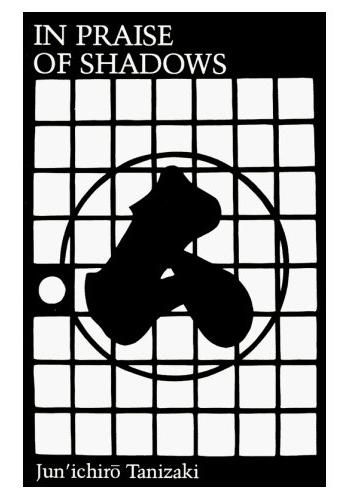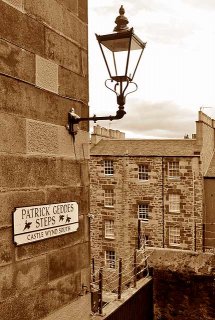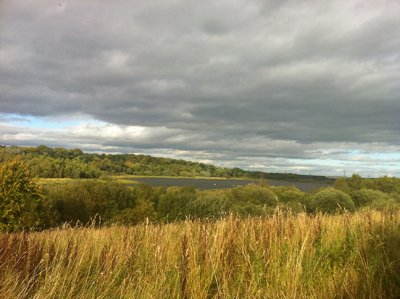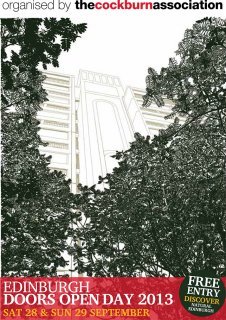Yasmin Ali
Urbanism // Design
Patrick Geddes: A Modern Thinker, Talk by Prof. Aubrey Manning@Scottish Historic Buildings Trust, 6-730pm Friday 27.09.13
September 29th, 2013This year's series of talks for Edinburgh's edition of Doors Open Day has welcomed experts from a range of disciplines to speak on architecture and related topics. Aubrey Manning is a distinguished professor of Zoology, and spoke on the legacy of polymath and pioneer Patrick Geddes, a 'prophet without honour', being understated in modern history so far, despite significant contributions to fields as diverse as ecology, sociology and town planning.
Geddes' strength lay in his prescience regards anticipating social needs, and his ability to think laterally and synthesise information from myriad fields to give a holistic approach to analysis. Manning relates the remarkable story of a young biologist praised by contemporaries and seniors as renowned as Darwin and Huxley, but denied a chair at Edinburgh University due to his lack of a completed undergraduate degree. Geddes assumed Chair of Botany at Dundee University, then led a varied career which opened up opportunities to present ideas in London, and travel and work on town planning projects in India.
Despite lack of recognition from the city's establishment, Geddes achieved social change in Edinburgh with his approach of 'Conservative surgery' to counter the effects of the grid-iron plan. In the Grassmarket, home of the Scottish Historic Buildings Trust (SHBT) in Riddle's Court, Geddes rescued the slums of the early 20th century from further decay and prospective demolition by selectively removing sections to decrease density, increase access to modernised services and sanitation and create inner courts and gardens. This approach allowed the best properties to be retained and restored, and their amenity value increased by the new open courts.
Geddes also bought and brought and innovative outward-looking exhibition to the Camera Obscura further along the Royal Mile. Manning describes how Geddes is beginning to be memorialised around the area, with a recent cast bust in the garden of Sandeman House off High St, and a plaque at Patrick Geddes Steps, leading from Johnston Terrace to the Grassmarket. Uniquely, the street name in the Old Town lettering also contains Geddes' three doves symbolising Sympathy, Synergy and Synthesis, three tenants of Geddesian thinking.
Manning presented an interesting and informative narrative detailing aspects of Geddes' life and work and highlighting ideas of note worth remembering.
The SHBT is currently raising money to complete funding for the proposed Patrick Geddes Centre for Learning and Conservation. The fund can be seen here.
Seven Lochs Wetland Park Walk & Presentation of Masterplan (Collective Architecture), Glasgow Doors Open Day, 22.09.13
September 27th, 2013Jude Barber and Nick Walker of Collective Architecture presented a selection of their firm's inputs into the Seven Lochs Wetland Park masterplan, at this year's Doors Open Day in Glasgow. The talk was presented in-situ at The Bridge, in Easterhouse, followed by a guided walk to the centre of the park led by members of Glasgow Clyde Valley Green Network.
The talk was illustrated by maps and visuals for proposals for a vision for The Seven Lochs Wetland Park, and talked through some of the key concepts and driving factors behind the masterplan for what will be the largest urban nature park in Scotland, at over 19sqkm, almost five times the size of Strathclyde Country Park.
The Wetlands have potential to be a major recreational and amenity resource for existing and proposed communities, with over 4500 housing units proposed across its area in designated Community Growth Areas (CGA's). What is key to the success of the project is the adoption of its principles by private housing developers, for which the CGA's set out clear design principles for exemplary projects, as well as collecting revenues for maintenance and infrastructure, for example, via mechanisms like planning gain. The architects spoke of the opportunity to fulfil environmental criteria in more imaginative ways than the current tickbox approach taken by many. For example, they mention that SuDS run-off areas tend to be fenced off and left to the vestiges of a development, when they have the potential to be a central shared amenity space, like a water feature or pond which the residents can collectively enjoy, maintain and take pride in.
The Wetlands Park spans two local authority areas - Glasgow City Council and North Lanarkshire Council - and it was noted that the two have worked very well in sharing the vision and approach, no doubt helped by the overarching steer from Glasgow and Clyde Valley Strategic Development Planning Authority. Collective Architects, together with a multidisciplinary team of ecologists, hydrologists and GIS Specialists, and Cost Consultants, have compiled a wealth of knowledge drawing on a number of local authority planning guidances and site visits, to generate the masterplan and visioning document, which can be read here.
The walk after the hour's session took a group locals and interested professionals to Bishop's Loch, around the centre of the park, and talked in general about the history and ecology of the park and its current maintenance activities led by community woodland groups.
Doors Open Day Edinburgh, Talk: 'Footfall' by Malcolm Fraser@RCAHMS, 1-2pm Monday 23.09.13
September 23rd, 2013Edinburgh architect Malcolm Fraser presented a talk at two scales: firstly, his work with the National Review of Town Centres in Scotland, which seeks to recommend general strategies for to improve the vibrancy and viability of Scottish Town Centres as places of economic growth and interest. Secondly, he presented a series of projects from his own practice which mediate sensible use of space and siting and reflect aspects of the thinking behind the report's principles in general, where appropriate.
The title 'Footfall' neatly summarises both the commercial aspirations of inner-city developers (particular retailers), and the human-scale consideration of Fraser's work. Stand-out projects included a mixed-use development in Stromness which mimicks the traditional urban form of enclosed courtyards to mask the effect of the wind, and a scheme for Lews Castle & Museum, currently on site, which breaks boundaries with its innovative use of displays and the landscape.
Fraser also provides a whistle-stop tour in slides of some of his best known arts buildings throughout Edinburgh, including the National Poetry Library, National Storytelling Centre and Dovecot Studios, all of which worked against some unworkable existing arts strategies. A new building to check out this Doors' Weekend is surely his recently completed Edinburgh Centre for Carbon Innovation (ECCI), which fittingly, is the first ever development of its kind to achieve an “outstanding” rating from BREEAM, the world’s leading sustainability rating system for the built environment.
The talk was the first in a series of lunchtime talks held at The Royal Commission on the Ancient and Historical Monuments of Scotland (RCAHMS) for this year's Doors Open Day, which in Edinburgh's case has extended to a week of lively talks, walks and the obligatory weekend of exclusive building visits.
PechaKucha, September 2013, Edinburgh, Vol. 24, 'Hidden Heroes', Inspace, Crichton St.
September 20th, 2013PechaKucha ‘Hidden Heroes’
September 2013, Edinburgh, Vol. 24
PechaKucha is Japanese for chitchat, and is a simple 20/20 formula reliant on creatives showing 20 slides, each for up to approximately 20 seconds, for a brief and succinct tour of their work and/or interests and inspirations. The presentation concept Architects Astrid Klein and Mark Dytham devised the presentation concept, launching the first PechaKucha Night (PKN) in Tokyo in early 2003. Ten years later, they continue to support the Tokyo PKN network now that the format has been continued globally.
This edition, Edinburgh’s Volume 24, brings together ten locals all with a connection to the city, and to diverse creative pursuits as distant as CGI, painting, photography, gardening and writing. Not all presentations were immediately recognisable by the common theme of ‘Hidden Heroes’, but strands of these could be discerned from many of the talks, even if only tenuously in some.
Memorable talks included the humour injected by artist Emily Inglis dry comparison of post-recession Edinburgh suburb Gogarburn (home of the tram depot and RBS offices), to a village in a struggling developing country. Personal and personably delivered were slideshows by artist Rabiya Choudhry and IT expert Kate Ho. Choudhry spoke of her inspiration from her family, including her late grandmother who spoke of possession by holy spirits or Jinn (Arabic: lit. genie) who is a key influence on her current and forthcoming work. Ho gave an upbeat talk about her ’30 things to do before you’re 30’, which included a few surprises such as extreme ironing as a sporting pursuit and its subsequent press attention.
In contrast, photographer Peter Dibdin’s Southside photography project used Hidden Heroes as its subject matter of sorts, focusing on portraiture of community members of the local area. Artist Keith Harman’s talk included description (and testing) of his heroic idea of buying up variants of famous gallery spaces domain names and redirecting these to his own site, and using this as a platform to publicise emerging artists.
Edinburgh has been hosting PKN’s since May 2007, and since December 2009 these have been held at Inspace, in conjunction with New Media Scotland. This edition of PechaKucha ended with the sad news that the next edition (Vol. 25, December 2013), may be the last at New Media Scotland’s current home at Inspace, which is a well-equipped and versatile venue nestled in the middle of the main campus at Edinburgh University.
Five alternative short reads
February 5th, 2013Leave Miller's Construction Series and neuferts'
at the office and cast an eye over some short books
and novellas which may be of interest...
I neglected to write 'Top' as a prefix to the headline,
because, well, tastes vary, and who am I to say what's best to read?
Good reads I would recommend, however, include the following curated list:

Original cover designed by Yukio Futugawa
5. If you're searching for a design for life, try the Philosophy book 'In Praise of Shadows', by (Philosopher) Jun'ichiro Tanizaki, first published 1933
Considered a modern classic, Tanizaki's essay speaks eloquently through an aesthete's lens which varies its focus on subjects as diverse as food, interiors, the precious mineral jade, pottery and even toilets. In particular, its passages on the ceremonial art of drinking tea, and the lights and darks of the laquerware have some poetic resonance. At a lean 80-pages, it's slimmer than some design blogs, but there's imagery in every line. Worth a read.

4. If you want to know more about Britain's capital with a book you can take on the tube, try the London essay 'London: Bread and Circuses', by (Journalist) Jonathan Glancey, 2001
Glancey, well-known as the Architectural and Design correspondent of the Guardian, has gifted us with a very concise history of London, which references urban policy throughout. An illuminating read, at under 150pages, including many black and white photos, it's an excellent record of the specific and special issues which shaped-and continue to shape-the history of this modern metropolis. Glancey's polemic makes a convincing case that flagship projects around London are privatised 'circuses', setting up the discourse for an interesting read.






